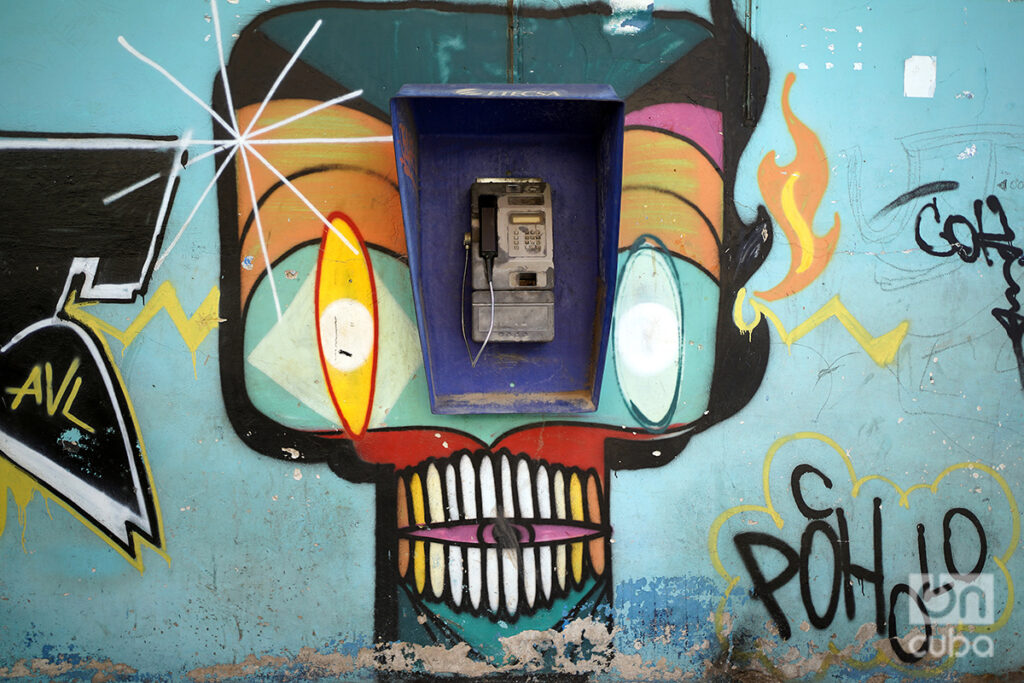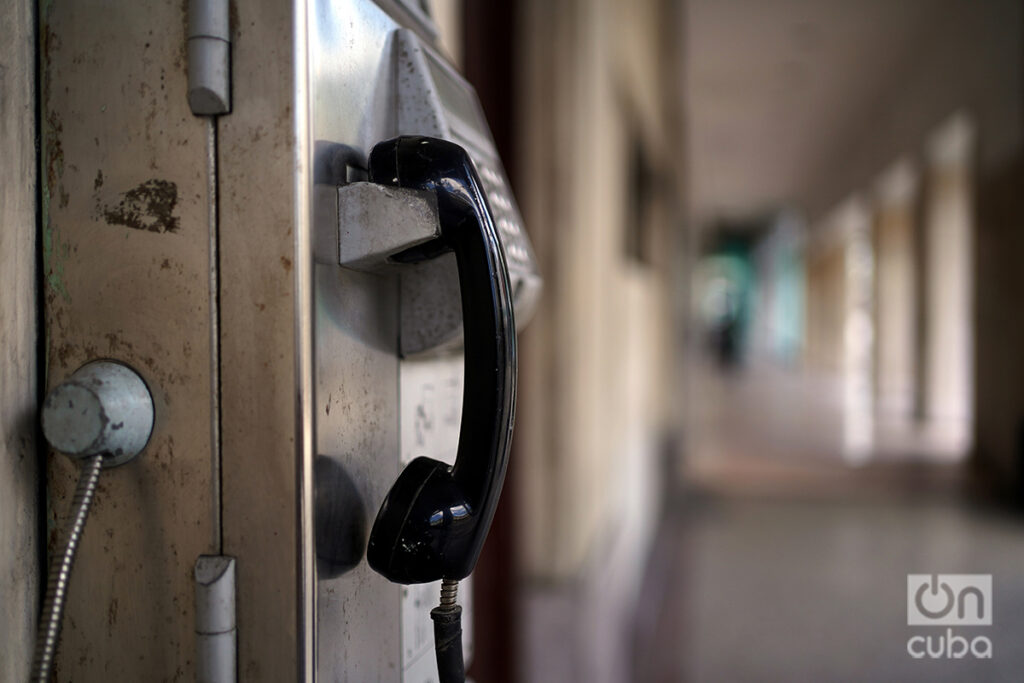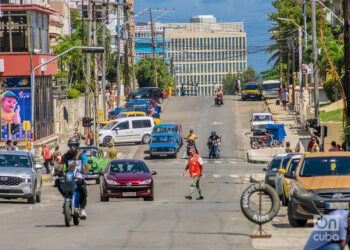In the 21st century, the era of smartphones — useful in our daily lives, but at the same time making us increasingly useless and dependent — old payphones remain a common presence on the streets of Havana.
Despite the proliferation of their younger relatives, smartphones, the old coin-operated payphones, or the newer ones that work with cards, they are still there, clinging to poles and unpainted walls.

Of course, anyone who wants to communicate through one of them, whether out of necessity or curiosity, will have to make many attempts; very few of them work. They all look old, rusty and threadbare. Dying and silent.

Most of them have been mutilated, victims of vandalism and apathy and are just ugly shells without cables, without keys or without a headset. Useless devices that are still there, unscathed, contributing to the retro and decadent vibe of a city in many ways anchored to the 20th century.

In 2022 there were about 57,000 public telephones installed in the country, according to a report from the IPS agency, which adds that mobile telephone lines had registered an increase of more than half a million between 2021 and 2022.

Officially the telephone was patented in 1876 by Alexander Graham Bell, a Scot living in the United States. But other sources suggest that the true inventor of the device was Antonio Meucci, an Italian living in Havana who, after testing several prototypes, built the “teletrophone” in 1854, long before Graham Bell registered his in the U.S. patent office.
Wherever the telephone was invented, colonial Havana was not far behind and had its first device of this type in 1877, and already in 1885 the city had an incipient public telephone service.

Currently, public telephones are located near areas of social interest, such as hospitals, polyclinics, airports and train and bus terminals, schools, banks or shopping centers. In my childhood, when having a landline at home was a little less than a luxury and cell phones were not even seen in the movies, there was a “public” one almost on every block. And they worked.

With the increase in cell phones, much later, public telephones have practically disappeared in most of the world, even booths as famous as the red ones in London have been removed and only a few remain for tourist purposes. Ours, as they are, add to that vintage appeal that foreigners who visit us look for.

In Cuba, especially in Havana, there are still many of them and the truth is that, broken or working, people are looking for them less and less. I’ve been walking around Havana for days, photographing those old dinosaurs with keys and I’ve barely seen two people use them.

Cellular telephony, even though it is the most used by Cubans, is almost inaccessible for many people; however, it is the most used by Cubans. The public telephones that still work in Havana and the rest of the island are the salvation of the lowest-income people, who by necessity cling to these devices and pray to find one with a dial tone.










